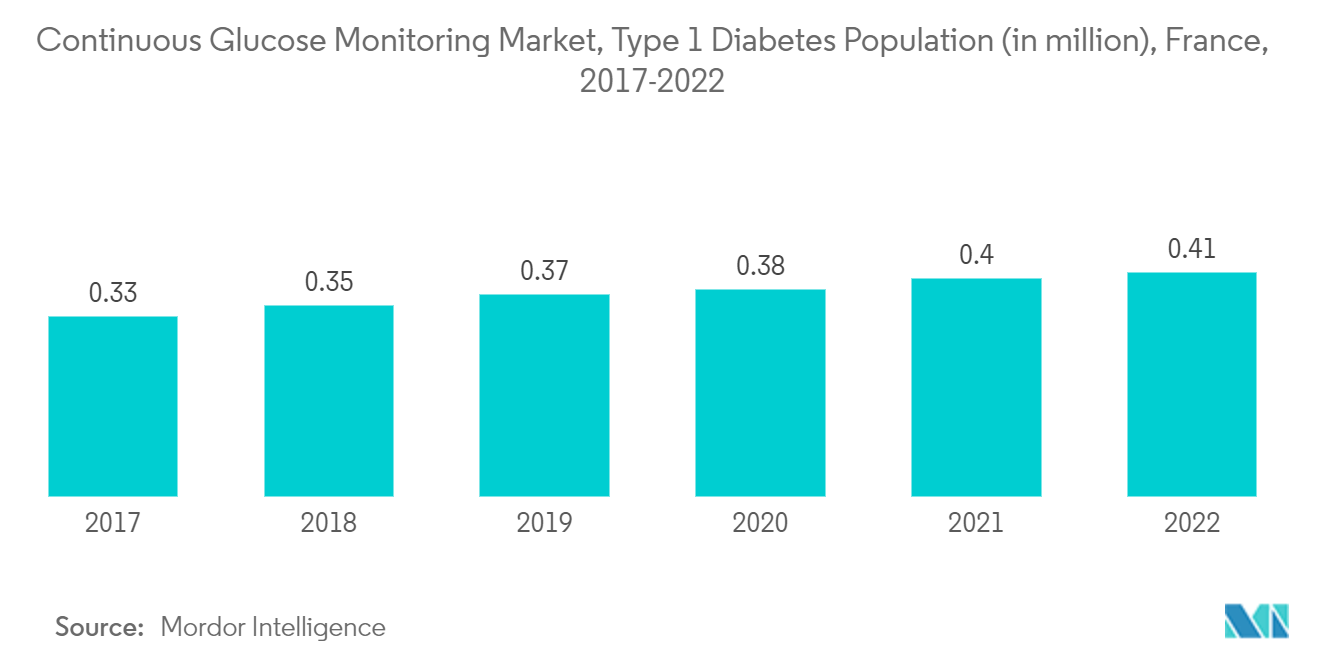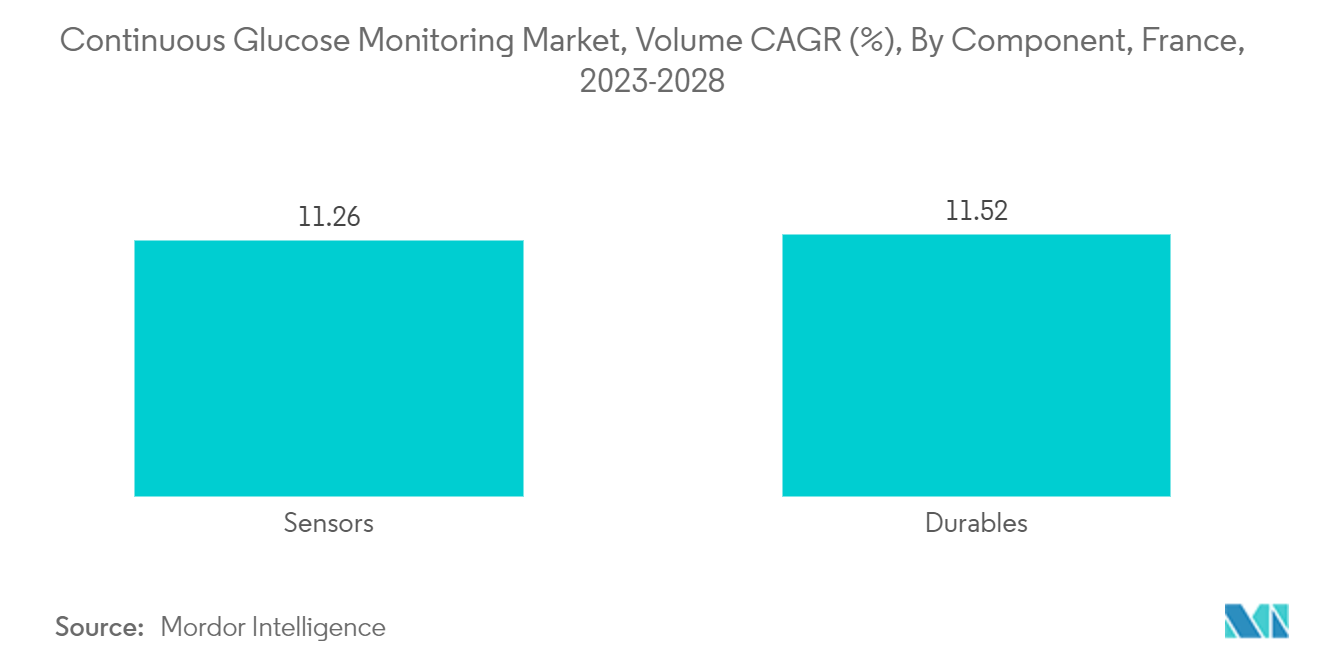Market Trends of France Continuous Glucose Monitoring Industry
Rising diabetes prevalence
The diabetes population in France is expected to grow by about 2.9% over the forecast period.
According to the International Diabetes Federation's latest estimates, the prevalence of diabetes in adults in France was approximately 8.6%, and about 27.9% of the population was undiagnosed.
In France, insulin and other related supplies and technologies are free of charge for all patients with diabetes. As per national guidelines, screening for diabetes-related complications is available in France except for the diabetes foot. A five-year health plan at the regional level supports the national health policy guidelines. Further, the French health benefit basket plays an important role; diabetes is one of the 30 chronic diseases covered 100% by statutory health insurance under the ALD scheme (affections de longue durée). For those not covered under ALD, a share of the official health care tariff is paid by the patient and varies depending on the category of goods and care.
Diabetes is essentially a data management disease, as the real-world health and treatment data provides integrated and personalized chronic disease management. Both patients and diabetes care providers use continuously collected metabolic, treatment, and lifestyle data in the process of joint decision-making on treatment. France has a working diabetes registry for people living with T1D and electronic health records. E-health is adopted mainly in the context of video consultations and electronic prescriptions.
Further, digital health technologies, including digital health applications, support diabetes self-management. The vast range of apps in the diabetes field supports the adoption of lifestyle interventions for the prevention and management of diabetes, the evaluation of blood glucose control quality, and the dosing of insulin. Integration of Continuous Glucose Monitoring with insulin calculators, automated insulin titration software, and remote coaching are further developments that provide patients with poorly controlled diabetes additional support needed to improve critical outcomes, thereby enhancing the market prospects in the years to come.

The sensors segment is expected to hold the highest share over the forecast period
Continuous glucose monitoring sensors use glucose oxidase to detect blood sugar levels. Glucose oxidase converts glucose to hydrogen peroxidase, which reacts with the platinum inside the sensor, producing an electrical signal to be communicated to the transmitter. Sensors are the most important part of continuous glucose Monitoring. Technological advancements to improve the accuracy of the sensors are expected to drive segment growth during the forecast period.
Researchers are trying to explore alternatives to electrochemical-based glucose sensors and create more affordable, minimally invasive, and user-friendly CGM sensors. Optical measurement is a promising platform for glucose sensing. Some technologies have been reported to have high potential in continuous glucose sensing, including spectroscopy, fluorescence, holographic technology, etc. Eversense, a CGM sensor based on fluorescence sensing developed by Senseonics Company, presents a much longer lifespan in comparison with electrochemical sensors.
Psychological support for people with diabetes is available as part of an experimental program in the country. The frequency of monitoring glucose levels depends on the type of diabetes, which varies from patient to patient. Type-1 diabetic patients need to check their blood glucose levels at regular intervals to monitor their blood glucose levels and adjust the insulin dosing accordingly. The expenditure incurred by Type-1 diabetic patients on these devices is nearly double that of Type-2 diabetics. The current CGM devices show a detailed representation of blood glucose patterns and tendencies compared to a routine check of glucose levels at set intervals. Furthermore, the current continuous glucose monitoring devices can either retrospectively display the trends in the levels of blood glucose by downloading the data or give a real-time picture of glucose levels through receiver displays. The newest CGM models, the Abbott Freestyle Libre 3 and the Dexcom G7, overcame many technical barriers. Continuous glucose monitoring devices are becoming cheaper with the advent of new technologies, like cell phone integration, which is likely to drive the segment growth during the forecast period.


